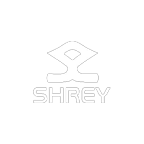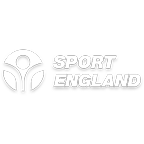The ECB has helmet safety measures, which were introduced with a view to reducing the risk of head and facial injuries within the game. The following information should assist Leagues, Clubs, Parents and Players at the recreational level to understand the key elements of these and what they mean.
Players over 18
The ECB strongly recommends that all adult recreational cricketers should wear helmets for certain activities, preferably which meet the most recent British Safety Standard (see below). This recommendation applies to batting against all types of bowling, wicket-keepers standing up to the wicket (who may as an alternative wear face protectors) and fielders fielding closer than eight yards from the batsman’s middle stump, except behind the wicket on the off side.
Players under 18
After an incident involving a child being hit on the head while not wearing a helmet, a reminder of helmet guidelines to all clubs with junior sections or juniors playing in open age cricket. Please ensure this message is communicated throughout your club and signage is clear and visible, including nets and practice areas:
In February 2000 (updated in 2015), the England and Wales Cricket Board (ECB) issued safety guidance on the wearing of helmets by young players up to the age of 18. In brief, the guidance recommends that:
helmets with a faceguard or grille should be worn when batting against a hard cricket ball in matches and in practice sessions
young players should regard a helmet with a faceguard as a normal item of protective equipment when batting, together with pads, gloves and, for boys, an abdominal protector (box)
young wicket keepers should wear a helmet with a faceguard, or a wicketkeeper face protector when standing up to the stumps.
With the assistance of schools, cricket clubs and leagues, the wearing of helmets by young players is now standard practice in cricket throughout England and Wales. The original guidance allowed parents or guardians to give their written consent to allow a young player not to wear a helmet. However now parental consent not to wear a helmet should not be accepted in any form of cricket.
This guidance applies to all players up to the age of 18, both in open age group cricket and in all junior cricket played with a hard cricket ball. The guidance also applies during all practice sessions. Any individual taking responsibility for players should take all reasonable steps to ensure that this guidance is followed at all times.
Head Protectors/Helmets
The ECB and PCA strongly encourage all cricket clubs and cricketers to review their existing head protector equipment. In this Guidance Note, references to “head protectors” means helmets with a faceguard or grille.
The design and manufacture of cricket head protectors is now governed by British Standard BS7928:2013, which has been adopted by the ICC as the international standard. The standard ECB/PCA playing contract for professional cricketers also specifies that any helmet provided to a player by his employer club must meet this safety standard.
Note that BS7928:2013 specifies different tests for helmets to be used in senior and junior cricket, reflecting the smaller ball size used in the latter.
The helmets listed below are those for which evidence has been provided to the ECB by the relevant manufacturer that the standard has been met and the appropriate authority to display a “CE quality mark” granted.
That list distinguishes between helmets which are approved for use in senior and junior cricket, and also includes some helmets which have been approved for use at both levels.
Key Features of the New Safety Specification
The key features of the new specification, BS7928:2013, are:
it now includes a facial contact projectile test that assesses for penetration of the ball through the faceguard, and contact of the faceguard onto the face, using realistic ball impact speeds and conditions.
head protectors have been tested separately against men’s and junior sized cricket balls (a five-and-a-half ounce ball and a four-and-three-quarter ounce ball, respectively).
Women’s cricket
There was neither a pre-existing specific women’s head protector nor is there any BSi specification for women’s cricket head protectors.
However, as the size of the standard women’s cricket ball is between the standard men’s and junior’s balls, it is recommended that women use head protectors which have been tested against both the men’s and junior sized ball or at least against the junior size ball (because the smaller ball could potentially get through the gap above the faceguard on a men’s head protector).
Risk of injury
Whilst the ECB and PCA consider that head protectors are an essential part of a cricketer’s kit to mitigate the risk of death, injury or disability, it must be remembered that wearing a head protector cannot entirely eliminate that risk. The new specification makes head protectors safer than before, but cannot eliminate the risk of injury.
Things to look out for in purchasing a new head protector
The ECB and PCA has issued this guidance in order to heighten understanding, so that informed decisions as to which head protectors to purchase and use can be made by all cricketers.
Head protectors that have been tested against and comply with the new specification will be clearly labelled “BS7928:2013” and will contain clear labelling setting out whether the head protector has been tested against
(i) a men’s standard ball size of 5 ½ ounces,
(ii) a junior standard ball size of 4 ¾ ounces, or
(iii) both men’s and junior size balls.
The list of known head protectors that have met BS7928:13 appear on the ICC Website:
Please read our helmets FAQs (PDF 29kb) if you have further questions, and download the poster (PDF 106kb) for use at your club.



















